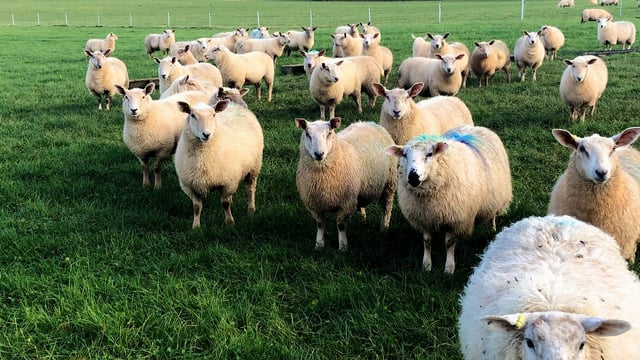Dairy farmers work on average '400 hours' more a year than other farmers
Dairy farmers get better economic returns, are at less risk of isolation but work longer hours compared to other farmers.
That is according to a new Teagasc report published today (Monday, November 3).
The Teagasc National Farm Survey 2024 Sustainability Report highlights that dairy "remains the economic powerhouse, with economic returns tending to be multiples of the other systems".
However it also pointed out that "the main dairy farm operator continues to work more hours than the farm operator in other farm systems, an additional 400 hours per annum, – even when time spent in off-farm work is included for all farm systems".
Separately, the Teagasc report shows that when it came to environmental sustainability, absolute greenhouse gas (GHG) emissions on a per farm and per hectare basis declined on dairy farms in 2024.
At the same time, chemical N fertiliser application rates increased but "this was more than offset by a decrease in overall livestock numbers on dairy farms -although the dairy cow herd size was static".
According to the latest Teagasc research, this meant that milk-related emissions were also static.
"Per hectare emissions were also affected by increasing farm size which contributed to a reduction in per hectare GHG-based emissions," they added.
Farmers
The aim of National Farm Survey 2024 Sustainability Report is to provide the latest available information on the "sustainability performance" of farms in Ireland.
The Sustainability Report and a new 'Sustainability Dashboard' - also launched today by Teagasc - both use the National Farm Survey (NFS) to "track the progress" of dairy, cattle, sheep and tillage farms in relation to their economic, environmental and social sustainability.
According to Trevor Donnellan, head of the Teagasc Agricultural Economics and Farm Surveys department and co-author of the latest report, the new Sustainability Dashboard "charts a wide range of aspects of sustainability for Irish agriculture".
The report details that "most economic sustainability metrics recovered strongly in 2024 but the strong economic performance in that particular year "was above the long-term average in dairy and drystock systems".
The report also examined what farmers, particularly dairy farmers, have been doing to "address environmental emissions".
According to Teagasc researchers, in 2024 45% of slurry application on cattle farms and 85% of slurry application on dairy farms was undertaken using low emissions slurry spreading (LESS) equipment.
"Dairy farmers also made further progress in the transition to lower emissions chemical fertiliser in 2024, with 40% of the total nitrogen applied in 2024 in the form of protected urea.
"However, the usage of protected urea on drystock farms remains low, at between 9 to 14% of total chemical N applied for sheep and cattle farms respectively," they added.
Protein
The Teagasc report, released today, also contains two new "social sustainability indicators" developed by Dr. Marie Merlo, from the Rural Economy and Development Programme.
These indicators are measures of food security and are based on an assessment of the protein generated across different farm systems.
"Results indicate that the average dairy farm generates enough protein per hectare to meet the yearly requirement of 20 people, while the corresponding figures for the average tillage, cattle and sheep farm are 15, 4 and 3 respectively," the report states.
According to Dr. Merlo, the main Irish land-based farm systems can generate enough protein to meet the requirement of an estimated 36 million people.
Even when allowance is made for the protein in animal feed, results indicate suggest that Irish farm systems could meet the yearly protein requirements of 30 million people.












